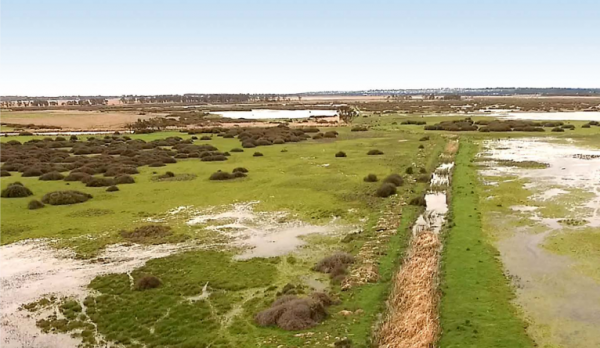Council has adopted a 20-year plan to fix a planning mistake with a new wetlands park in Charlemont.
City Hall acquired the land in 2019 to provide an “end-of-drainage solution” for stormwater from the Armstrong Creek and Horseshoe Bend development precincts.
Then-mayor Bruce Harwood admitted City Hall’s handling of development in Armstrong Creek had led to stormwater run-off issues, forcing council to compulsorily acquire the land for drainage.
At the time the project was forecast to cost $18.4 million.
The Sparrovale Wetlands Master Plan will guide protection and enhancement measures for the 500-hectare site in Charlemont, adjacent to Lake Connewarre State Game Reserve, according to council, which adopted the plan last month.
Phase one includes completing major drainage infrastructure works, pest plant and animal control, protecting threatened species and preparing a revegetation plan by 2022.
Council then plans to establish public parkland and provide public walking access through to the Barwon River, along with informal access around the wetlands.
The final phase involves connecting the Barwon River Trail to Geelong, upgrading walking tracks, completing revegetation by 2040, followed by a promotional campaign.
“This is one of our most exciting and innovative environmental sustainability projects,” Geelong mayor Stephanie Asher said.
“We have a rare opportunity to create a unique parkland ecosystem that will protect the area’s biodiversity and cater to a range of passive recreational and educational activities.
“It will also increase access for water-based activities, such as fishing, canoeing and kayaking.
“Having been a private farm for many decades, Sparrovale’s environmental and cultural values are largely unknown.”
Environment portfolio chair Jim Mason said improving connections to walking and cycling links was a key priority.
“You’ll be able to enjoy the relatively short walk to the river or take a one-hour return journey around the wetlands,” Cr Mason said.
“With migratory birds travelling from as far afield as Alaska and Siberia to feed and rest on the wetlands, these plans for the area will allow more people to view and appreciate these species and their amazing resilience.”







